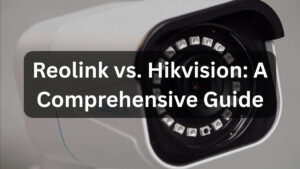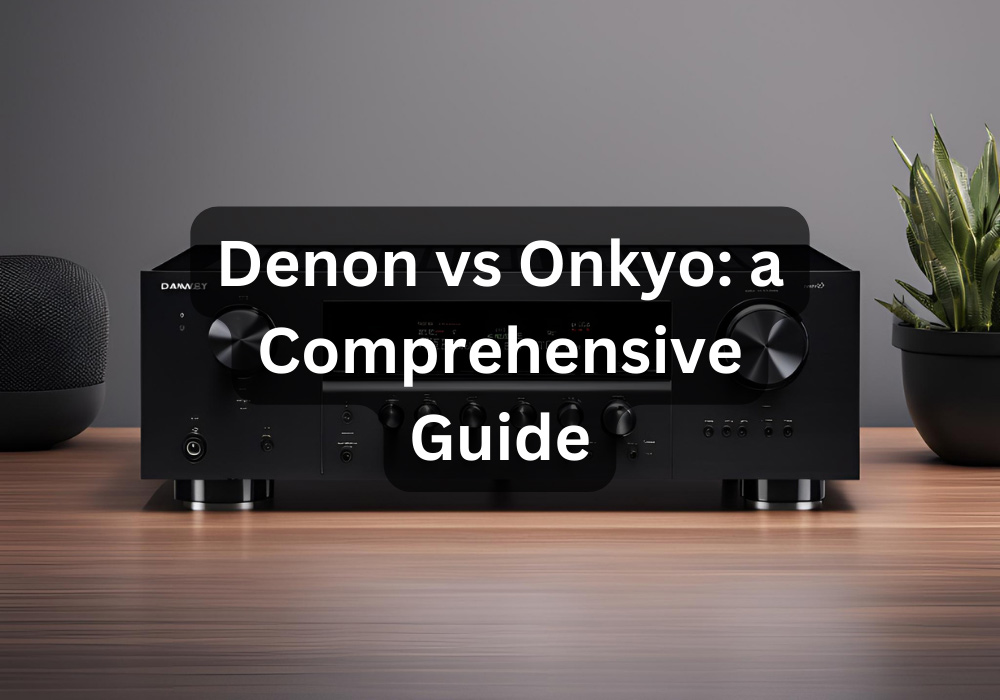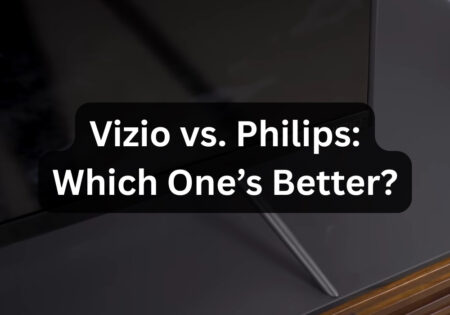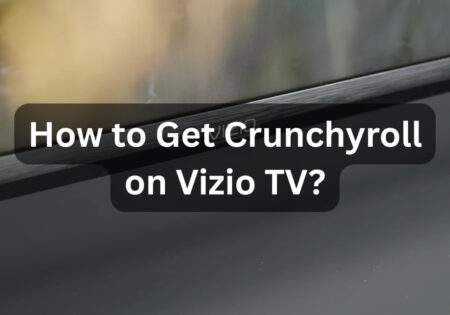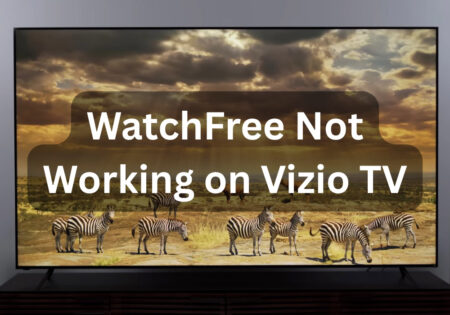In order to compare Denon vs Onkyo, there are several factors to consider, such as audio and video performance, connectivity, advanced features like room calibration, build quality, user-friendliness, and value for money. I’ve reviewed many Denon and Onkyo AV receivers over the years, and in this article, I’ll compare these brands in every area and give you the best suggestion according to your budget. This is the most comprehensive Onkyo vs Denon article you’ll find on the web!
Which is Better, Denon or Onkyo? (Quick Answer)
As much as I love Denon for its commitment to manufacturing great receivers, I believe Onkyo generally provides better value for money. Here’s why:
- In the budget receiver category: Onkyo’s TX-SR3100 delivers superior audio and video performance compared to Denon’s S540BT.
- In the moderately-priced receiver category: the Onkyo TX-NR7100 and Denon AVR-X2700H are quite competitive, but Onkyo has a slight edge due to its support for IMAX Enhanced.
- In the high-end receiver category: the Onkyo TX-RZ50 and Denon AVR-X6700H are both top-notch. However, the RZ50 seems more appealing because of its Dirac Live calibration.
Also Read:
Denon vs Marantz
In the table below, you can see a complete comparison table for the models I’ve introduced in each budget range:
| Price Class | Model | Audio Performance | Video Performance | Connectivity | Features & Functionality |
| The Budget Class (Jump to Comparison) | Denon AVR-S540BT | 70 WPC, Class A/B, 6-16 ohms, 0.08% THD, 98 dB SNR | 4K at 60Hz, HDR10, BT.2020, 4:4:4, No Upscaling, 5 HDMI | Wired: 5 HDMI, 1 USB, aux, optical, coaxial | Basic auto-calibration, no multi-zone, no voice control |
| Onkyo TX-SR3100 | 80 WPC, Class A/B, 4-16 ohms, 0.08% THD, 100 dB SNR | 4K at 60Hz, HDR10, HLG, Dolby Vision, No Upscaling, 4 HDMI | Wired: 4 HDMI, 1 USB, aux, optical, coaxial | AccuEQ calibration, no multi-zone, no voice control | |
| The Moderate Class (Jump to Comparison) | Denon AVR-X2700H | 95 WPC, Class A/B, 4-16 ohms, 0.08% THD, 100 dB SNR | 4K at 120Hz, 8K at 60Hz, HDR10, HLG, Dolby Vision, 8K Upscaling, 6 HDMI | Wired: 6 HDMI, 2 USB, aux, optical, coaxial, Ethernet, Wi-Fi | Audyssey MultEQ XT, Zone 2, voice control, HEOS app |
| Onkyo TX-NR7100 | 100 WPC, Class A/B, 4-16 ohms, 0.08% THD, 100 dB SNR | 4K at 120Hz, 8K at 60Hz, HDR10, HLG, Dolby Vision, HDR10+, 8K Upscaling, 6 HDMI | Wired: 6 HDMI, 2 USB, aux, optical, coaxial, Ethernet, Wi-Fi | Dirac Live, AccuEQ, Zone 2 and 3, voice control, Onkyo Controller app | |
| The Premium Class (Jump to Comparison) | Denon AVR-X6700H | 140 WPC, Class A/B, 4-16 ohms, 0.05% THD, 110 dB SNR | 4K at 120Hz, 8K at 60Hz, HDR10, HLG, Dolby Vision, 8K Upscaling, 8 HDMI | Wired: 8 HDMI, 3 USB, aux, optical, coaxial, Ethernet, Wi-Fi | Audyssey MultEQ XT32, Zone 2 and 3, voice control, HEOS app |
| Onkyo TX-RZ50 | 120 WPC, Class A/B, 4-16 ohms, 0.05% THD, 110 dB SNR | 4K at 120Hz, 8K at 60Hz, HDR10, HLG, Dolby Vision, HDR10+, 8K Upscaling, 7 HDMI | Wired: 7 HDMI, 2 USB, aux, optical, coaxial, Ethernet, Wi-Fi | Dirac Live, AccuEQ, Zone 2 and 3, voice control, Onkyo Controller app |
Now, if the table above looks like complete jargon to you, I suggest you read on, as I’ve broken down everything to help you make the best choice.
Denon vs Onkyo: Brand Overview
Denon’s Reputation and Innovations
Denon Corporation, founded in 1910, is a Japanese audio equipment company renowned worldwide for manufacturing high-quality, feature-rich AV receivers, headphones, and home theater systems. They combine innovative tech with superior craftsmanship to deliver an exceptional sound experience for their customers. Denon AV receivers are famous for their longevity, designed to work consistently for many years.
Onkyo’s Reputation and Innovations
Onkyo is a younger company compared to Denon. Founded in 1946, Onkyo has established itself as a great brand among home theater enthusiasts and audiophiles. While Denon targets a broader audience, from casual listeners to audiophiles, Onkyo’s efforts are dedicated to people seeking high-performance audio equipment, including AV receivers, speakers, and home theater systems. Despite a few complaints from customers regarding HDMI board issues, Onkyo AV receivers are also reliable and can last for many years. However, in terms of functional lifespan, I give the credit to Denon, although Onkyo has made significant strides in recent years.
How Do We Compare Denon vs Onkyo in This Guide?
As I mentioned earlier, we are going to compare these brands in three separate price classes: budget, moderate, and premium. In each class, we will compare two of the best products from each brand in every technical aspect.
Denon vs Onkyo: The Budget Class ($300 – $500)
For now, let’s compare two of my favorite budget models. The models we review in this section are:
- Denon AVR-S540BT ($349.99)
- Onkyo TX-SR3100 ($399.99)
Denon AVR-S540BT vs Onkyo TX-SR3100: Audio Performance
To start, please take a look at this table below, which compares the audio features of these models:
| Technical Aspect | Denon AVR-S540BT | Onkyo TX-SR3100 | Winner |
|---|---|---|---|
| Power Output | 70 watts per channel | 80 watts per channel | Onkyo TX-SR3100 |
| Amplifier Class | Class A/B | Class A/B | Tie |
| Impedance Compatibility | 6 to 16 ohms | 4 to 16 ohms | Onkyo TX-SR3100 |
| Total Harmonic Distortion (THD) | 0.08% | 0.08% | Tie |
| Signal-to-Noise Ratio (SNR) | 98 dB | 100 dB | Onkyo TX-SR3100 |
Onkyo’s higher power output (80 watts per channel into 8 ohms), while seemingly a tiny addition compared to the Denon model, makes Onkyo’s performance in larger or acoustically challenging rooms noticeably better. The wider impedance compatibility (4 to 16 ohms) makes Onkyo’s receiver compatible with a broader range of speakers. Lower impedance speakers usually demand more power to drive, but they provide better sound quality. Regarding SNR, the higher this attribute, the better your AV receiver performs in amplifying audio signals without dragging in a lot of background noise. Although, according to my tests, this variation isn’t a big deal, for those super-conscious about audio detail, it may differ.
So, to draw a final decision, I can say that the Onkyo TX-SR3100 performs better than the Denon AVR-S540BT in terms of audio performance.
Onkyo’s superior power output markedly elevates its performance in expansive or acoustically demanding spaces, outshining Denon.
Denon AVR-S540BT vs Onkyo TX-SR3100: Video Performance
It’s time to put our two budget nominees head-to-head in the video performance category. Spoiler alert: Onkyo’s receiver is a clear winner. But first, take a look at the table below, and we’ll discuss it afterward:
| Technical Aspect | Denon AVR-S540BT | Onkyo TX-SR3100 | Winner |
|---|---|---|---|
| Resolution Support | 4K at 60Hz, HDR10, BT.2020, 4:4:4 | 4K at 60Hz, HDR10, HLG, Dolby Vision | Onkyo TX-SR3100 |
| Upscaling | No advanced upscaling | No advanced upscaling | Tie |
| Pass-through | 4K/60Hz, HDR10, HDCP 2.2, BT.2020 | 4K/60Hz, HDR10, HLG, Dolby Vision, HDCP 2.2 | Onkyo TX-SR3100 |
| HDMI Connectivity | 5 HDMI inputs, 1 HDMI output | 4 HDMI inputs, 1 HDMI output | Denon AVR-S540BT |
What do we get from this table? We can see that both models support 4K resolution at 60Hz and are compatible with HDR10, meaning they can deliver smooth and sharp video content with lifelike colors. Neither offers upscaling, which is expected because we are dealing with budget models. However, Onkyo has a significant advantage here: it supports HLG (Hybrid Log-Gamma) and Dolby Vision.
While watching the Avengers: Endgame by Marvel Studios, I saw how effective Dolby Vision can be, as it adjusted the picture quality scene-by-scene, particularly during the epic final battle. The colors and shadowy scenes were much more enhanced and immersive.
So, if you care about a better HDR experience, Onkyo’s AV receiver should be your choice in terms of video performance. Denon has more HDMI inputs, which I believe isn’t a big advantage in this scenario, and Onkyo TX-SR3100 is indeed the winner here.
For an unparalleled HDR experience, Onkyo’s TX-SR3100 AV receiver is the superior choice for video performance compared to Denon AVR-S540BT.
Denon AVR-S540BT vs Onkyo TX-SR3100: Connectivity
| Connectivity Aspect | Denon AVR-S540BT | Onkyo TX-SR3100 | Winner |
|---|---|---|---|
| Wired Connections | 5 HDMI inputs, 1 HDMI output, HDCP 2.2, USB, aux, optical, coaxial digital inputs | 4 HDMI inputs, 1 HDMI output, HDCP 2.2, USB, aux, optical, coaxial digital inputs | Denon AVR-S540BT |
| Wireless Connections | Bluetooth (no Wi-Fi) | Bluetooth (no Wi-Fi) | Tie |
| Network Features | No Ethernet | No Ethernet | Tie |
| Streaming Services Integration | No built-in streaming services | No built-in streaming services | Tie |
As the table suggests, our budget models both offer a decent amount of conventional inputs and outputs for receivers. For wireless connection, they have Bluetooth, enabling you to stream music through your smartphone, tablet, or computer.
The lack of wired or wireless internet connection means you can’t directly use streaming services like Spotify and need an external streaming device like Roku or Fire Stick, or your smart TV. You also can’t integrate the device into a smart home setup without the internet, and there’s no possibility of automatic firmware updates. You can only connect your external devices to your AV receiver through HDMI cables. I think the lack of internet is a downside for both models.
So, since Denon offers an extra HDMI input, you can consider it the better option for connectivity. However, neither model is impressive in modern-day connection types due to the lack of internet connection possibilities.
Also Read:
Best Receiver for Klipsch Speakers
Denon AVR-S540BT vs Onkyo TX-SR3100: Functionality & Features
Alright then, for this part, we will go through the main features that help an AV receiver enhance the audio. We’ll also look into some smart features. To start, look at the table below:
| Feature | Denon AVR-S540BT | Onkyo TX-SR3100 | Winner |
|---|---|---|---|
| Surround Sound Formats | Dolby TrueHD, DTS-HD Master Audio (no Dolby Atmos, DTS) | Dolby Atmos Height Virtualizer, DTS Virtual | Onkyo TX-SR3100 |
| Calibration | Basic auto-calibration | AccuEQ calibration system | Onkyo TX-SR3100 |
| Zones and Multi-Room Audio | No multi-zone audio | No multi-zone audio | Tie |
| Voice Control | No voice control | No voice control | Tie |
| User Interface | User-friendly, on-screen display, setup assistant | Easy-to-navigate interface, Vocal Enhancer | Tie |
Regarding surround sound features, the Denon model offers impressive technologies such as Dolby TrueHD and DTS-HD. These advanced lossless sound codecs are great for a multi-channel setup, providing a perfect surround sound experience, but they still need surround speakers. On the other hand, the Onkyo model has the upper hand, supporting more robust features for surround sound like Dolby Atmos and DTS Virtual. Dolby Atmos is an object-based sound format that adds height channels to create a more immersive surround sound experience. Thanks to the Dolby Atmos Height Virtualizer technology, you won’t need additional height speakers in your setup. According to what I’ve witnessed, Dolby TrueHD or DTS-HD are no match for it.
Additionally, DTS Virtual is for people who don’t want to go through the complexity of surround setups. It can simulate a 3D sound experience with only two speakers. However, according to my experience, it’s not as immersive as Dolby Atmos, but it depends on your speakers.
Moving on to audio calibration features, while Denon’s receiver offers a basic auto-calibration feature that I found very easy to use, it still can’t be nearly as effective as Onkyo’s AccuEQ calibration system. This technology adapts to various room layouts and speaker placements to improve audio quality according to the acoustics of your room.
Since both devices are considered entry-level in the realm of AV receivers, we can’t expect advanced features like voice assistant compatibility or multi-zone audio from them. However, to decide on a better choice here, I give the credit to the Onkyo TX-SR3100 for its advanced surround sound and audio calibration technologies.
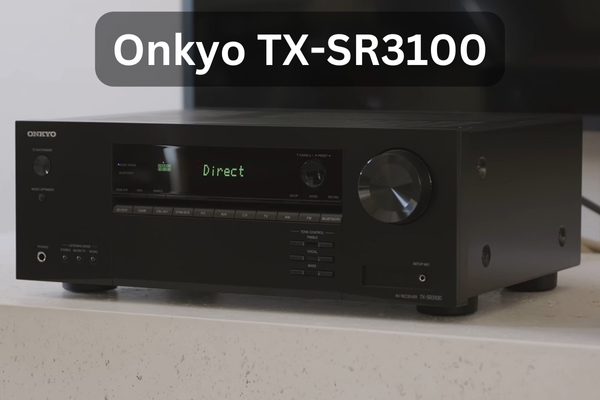
Denon AVR-S540BT vs Onkyo TX-SR3100: Build Quality and Design
Although these devices are budget models, none fall short in terms of the sturdiness of building materials
Denon’s receiver is constructed with reliable plastic and metal materials. It has a simple and clean front panel. The overall look of the device is modern and sleek. The device is pretty reliable, and I haven’t heard any complaints about its longevity from my customers.
Our Onkyo contender doesn’t fall short either. The plastic and metal materials are good companions for the long run, and the front panel is more detailed than Denon’s, with a larger display and more visible controls. There haven’t been major issues with this device, but as I should tell you every detail, I’ve had experiences with people who had to have their device repaired after a short period of time.
Denon AVR-S540BT vs Onkyo TX-SR3100: Ease of Use and Setup
Installing these two devices isn’t that complicated; however, Denon’s setup is a bit easier thanks to its helpful setup wizard for initial setup. But Onkyo’s receiver has a manual that I found very helpful throughout the setup process.
As you already know, firmware updates are necessary to keep your devices well-functioning, and AV receivers are no exception. Since neither of these two supports internet connection, you must check the manufacturer’s website and download the update, which you can then install on the device manually. This updating process isn’t as streamlined as an automatic update via the internet, so both devices lack a user-friendly approach in this situation.
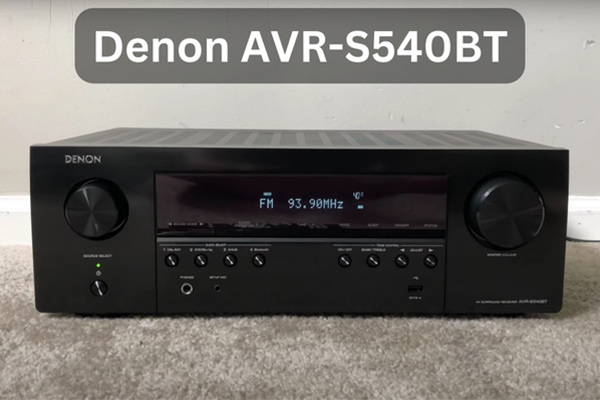
So, Which is Better, Denon AVR-S540BT or Onkyo TX-SR3100?
To draw a conclusion between these two top budget models, I give the credit to Onkyo’s device since it takes the lead in most of the important areas we discussed. It has superior audio and video performance, offers more features such as Dolby Atmos and DTS Virtual, and the price gap isn’t significant, making it the better choice.
In addition, if you’re looking forward to buy a budget device from Onkyo or Denon, I suggest you also read our Onkyo TX-NR6050 vs Denon AVR-S760H guide. These two models are a bit pricier than the two devices mentioned in this section, but they’re pretty popular among users.
Denon vs Onkyo: The Moderate Class ($500 – $1000)
I find these two models to be the perfect moderate choices among Denon and Onkyo products:
- Denon AVR-X2700H (Can be found on the market for $630)
- Onkyo TX-NR7100 ($705)
Denon AVR-X2700H vs Onkyo TX-NR7100: Audio Performance
Take a look at this audio comparison table:
| Technical Aspect | Denon AVR-X2700H | Onkyo TX-NR7100 | Winner |
|---|---|---|---|
| Power Output | 95 watts per channel | 100 watts per channel | Onkyo TX-NR7100 |
| Amplifier Class | Class A/B | Class A/B | Tie |
| Impedance Compatibility | 4 to 16 ohms | 4 to 16 ohms | Tie |
| Total Harmonic Distortion (THD) | 0.08% | 0.08% | Tie |
| Signal-to-Noise Ratio (SNR) | 100 dB | 100 dB | Tie |
As you can see, the two models are very competitive; they offer the same amplifier class, impedance compatibility, THD, and SNR. However, Onkyo again stands out due to its higher power output, making it suitable for larger rooms or setups that require more dynamic range and volume.
In practice, I didn’t notice a very significant difference in their overall audio performance. It’s just the power output that makes Onkyo a better choice for many setups. However, if your home theater room isn’t very large, the additional power output won’t mean much to you.
Denon AVR-X2700H vs Onkyo TX-NR7100: Video Performance
Here’s the comparison table for the two moderately priced models:
| Technical Aspect | Denon AVR-X2700H | Onkyo TX-NR7100 | Winner |
|---|---|---|---|
| Resolution Support | 4K at 120Hz, 8K at 60Hz, HDR10, HLG, Dolby Vision | 4K at 120Hz, 8K at 60Hz, HDR10, HLG, Dolby Vision, HDR10+ | Onkyo TX-NR7100 |
| Upscaling | 8K upscaling | 8K upscaling | Tie |
| Pass-through | HDR10, HLG, Dolby Vision | HDR10, HLG, Dolby Vision, HDR10+ | Onkyo TX-NR7100 |
| HDMI Connectivity | 6 HDMI inputs, 2 HDMI outputs, HDCP 2.3 | 6 HDMI inputs, 2 HDMI outputs, HDCP 2.3 | Tie |
As you can see, both models support 4K at 120Hz and 8K at 60Hz pass-through, enabling them to handle the latest video content with exceptional clarity and detail. To enhance the color and contrast of the video, they both feature HDR10, HDR10+, HLG, and Dolby Vision.
Now, about HDR10+, you should know that this technology doesn’t operate the same as HDR10 in managing brightness and color settings. As you may already know, colors are much more enhanced with HDR10+; the bright scenes are brighter, and the dark scenes are darker, providing better details and realism.
You can effectively realize the difference between HDR10 and HDR10+ when watching a movie like Blade Runner 2049. For instance, in the scene where K (Ryan Gosling) visits the deserted city, the neon lights are more vibrant and shadows are more detailed. The textures in the dark alleys are mesmerizing, making HDR10 no match for HDR10+.
Additionally, the Onkyo TX-NR7100 includes IMAX Enhanced, which allows you to watch IMAX Enhanced content through your AV receiver. However, to fully enjoy the benefits of IMAX Enhanced, such as optimized video and immersive audio, you’ll need other IMAX Enhanced certified devices, such as a compatible TV or projector, and speakers that meet the IMAX Enhanced specifications.
So, while both models don’t disappoint with video content, Onkyo TX-NR7100 has a slight edge here thanks to its IMAX Enhanced support.
Denon AVR-X2700H vs Onkyo TX-NR7100: Connectivity
| Connectivity Aspect | Denon AVR-X2700H | Onkyo TX-NR7100 | Winner |
|---|---|---|---|
| Wired Connections | 6 HDMI inputs, 2 HDMI outputs, HDCP 2.3, USB, aux, optical, coaxial digital inputs | 6 HDMI inputs, 2 HDMI outputs, HDCP 2.3, USB, aux, optical, coaxial digital inputs | Tie |
| Wireless Connections | Bluetooth, Wi-Fi, AirPlay 2 | Bluetooth, Wi-Fi, Chromecast | Tie |
| Network Features | Ethernet, DLNA, internet radio | Ethernet, DLNA, internet radio | Tie |
| Streaming Services Integration | HEOS (Spotify, Tidal, Pandora, Amazon Music) | Chromecast, DTS Play-Fi (Spotify, Tidal, Pandora, Amazon Music) | Tie |
Both devices offer decent connectivity options; they have a sufficient number of HDMI inputs and outputs, offer Bluetooth, and can connect to the internet via Ethernet port or built-in Wi-Fi.
Since both support connection to the web, they can be valuable companions for those who rely heavily on streaming music directly from services like Spotify, Tidal, Pandora, or Amazon Music. The choice between either model in terms of connectivity depends on which platform you prefer. Denon uses HEOS, while Onkyo supports Chromecast. Plus, the support for AirPlay 2 on both devices is good news for Apple lovers.
Denon AVR-X2700H vs Onkyo TX-NR7100: Features & Functionality
| Feature | Denon AVR-X2700H | Onkyo TX-NR7100 | Winner |
|---|---|---|---|
| Surround Sound Formats | Dolby Atmos, DTS, Auro-3D | Dolby Atmos, DTS, IMAX Enhanced | Onkyo TX-NR7100 |
| Calibration | Audyssey MultEQ XT | Dirac Live, AccuEQ | Onkyo TX-NR7100 |
| Zones and Multi-Room Audio | Zone 2 | Zone 2, Zone 3 | Onkyo TX-NR7100 |
| Voice Control | Amazon Alexa, Google Assistant, Apple Siri | Amazon Alexa, Google Assistant, Apple Siri | Tie |
| User Interface | User-friendly display, HEOS app | Intuitive interface, Onkyo Controller app | Tie |
To create a fully immersive experience for users, both devices are equipped with robust features for creating an amazing surround sound effect. Auro-3D, which you see on the Denon receiver, is another format known for delivering natural sound. However, it is mostly used in professional audio environments and isn’t very common among consumer devices. I believe Dolby Atmos to be the best surround sound technology, which thankfully both devices are integrated with.
For calibration, the Denon receiver utilizes Audyssey MultEQ XT, which I find very effective and easy to use. On the other hand, Onkyo has two technologies for calibration on this device: Dirac Live and AccuEQ. While AccuEQ can’t match Denon’s Audyssey in functionality, the Dirac Live calibration system is one of the most sophisticated and advanced calibration technologies I’ve ever seen! Its calibration is definitely a feature for professionals.
So, while Denon offers great calibration technology, Onkyo has a small advantage here with its Dirac Live system.
Multi-Room or multi-zone audio refers to the ability of an AV receiver to send different audio/video signals to multiple zones (rooms). Imagine you are watching a movie on the living room TV while your spouse is listening to music through the kitchen speakers. Among our two models, Denon’s receiver supports Zone 2 for both audio and video, while the Onkyo supports Zone 2 (for audio and video) and Zone 3 (for video), making Onkyo a better choice for the multi-room feature.
The voice assistant compatibility is robust on both models, supporting all three major assistants: Amazon Alexa, Google Assistant, and Apple Siri, making everyone happy!
Denon’s Audyssey MultEQ XT is effective and intuitive, while Onkyo’s AccuEQ lags behind. However, Dirac Live shines as an exceptionally sophisticated system.
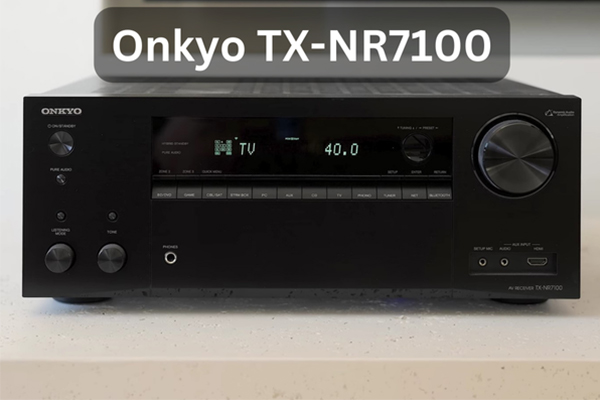
Denon AVR-X2700H vs Onkyo TX-NR7100: Build Quality and Design
Similar to our budget models, these two also offer great build quality and design. Let’s dive into the ins and outs of these two moderate receivers to see which one excels in this category.
Denon’s receiver has the vibe of a classic AV receiver with its sturdy black box design. The front panel is made of aluminum and consists of two big knobs, one for volume and the other for source selection, which are practical and user-friendly. It weighs about 21 pounds, which is kind of heavy, but that’s usually a sign of quality! This weight is due to its metal chassis, which showcases its resistance to bumps. Similar to every Denon receiver I’ve encountered over the years, this one also means business and can be reliable in the long run.
Onkyo’s receiver doesn’t fall short of Denon in terms of the quality of build and materials, though it’s a bit heavier at 22.9 pounds, again because of its robust metal chassis. Compared to the Denon, its design is more modern, featuring a large central knob along with smaller knobs and buttons that make navigation a breeze. Its dimensions are smaller than Denon’s, making it a better fit for people with limited space. The overall design and build are reliable and modern.
So, which one is a better option in this category? Considering Denon’s classic look and proven durability with fewer reports of damage and the need for repair, I see Denon as a better option here. However, if you prefer a modern touch, Onkyo won’t disappoint you either.
Denon AVR-X2700H vs Onkyo TX-NR7100: Ease of Setup and Use
When it comes to setting up and using an AV receiver, each model offers its own strengths and weaknesses. Let’s break it down.
As I mentioned in the features section, Denon’s receiver boasts a calibration system called Audyssey MultEQ XT. This technology offers a fully streamlined calibration process; just plug in the precision mic, and the system does all the heavy lifting for you. While not as professional as Onkyo’s Dirac Live, it can still be effective in most setups. Plus, navigating through the receiver’s functions is really easy and DIY-friendly thanks to the graphical user interface (GUI) and the Denon remote app. This means we are faced with a device that is very easy to use.
On the flip side, Onkyo is a better option for those who want to be in control of everything when it comes to sound adjustments. Its Dirac Live calibration system offers many sophisticated options for sound tweaking that can satisfy any professional. While it’s not very user-friendly and the calibration process takes about 45 minutes for a 5.1.4 setup, it is very practical. Onkyo’s control app isn’t as intuitive as Denon’s, which can be a drawback for users who aren’t very tech-savvy.
So, Which is Better, Denon AVR-X2700H or Onkyo TX-NR7100?
While both models are quite competitive in sound performance, features, build quality, ease of setup, and functionality, the Onkyo has a slight edge here due to supporting IMAX.
Onkyo vs Denon: The Premium Class (From $1000)
If you are looking for a robust AV receiver that’s a performance beast, here are the two models by Onkyo and Denon:
- Denon AVR-X6700H
- Onkyo TX-RZ50
Denon AVR X6700H vs Onkyo TX-RZ50: Audio Performance
Take a look at this table:
| Technical Aspect | Denon AVR-X6700H | Onkyo TX-RZ50 | Winner |
|---|---|---|---|
| Power Output | 140 watts per channel | 120 watts per channel | Denon AVR-X6700H |
| Amplifier Class | Class A/B | Class A/B | Tie |
| Impedance Compatibility | 4 to 16 ohms | 4 to 16 ohms | Tie |
| Total Harmonic Distortion (THD) | 0.05% | 0.05% | Tie |
| Signal-to-Noise Ratio (SNR) | 110 dB | 110 dB | Tie |
It’s crystal clear that they are almost like identical brothers in terms of audio performance. As I’ve witnessed, they are both incredible choices for delivering high-quality audio that will enhance any viewing experience. Although Denon’s 140 WPC at 8 ohms power output is better than Onkyo’s, this slightly lower output doesn’t mean you won’t get high-quality sound across many channels with the TX-RZ50. Both devices provide ample power for immersive audio in large home theater environments.
Denon AVR X6700H vs Onkyo TX-RZ50: Video Performance
| Technical Aspect | Denon AVR-X6700H | Onkyo TX-RZ50 | Winner |
|---|---|---|---|
| Resolution Support | 4K at 120Hz, 8K at 60Hz, HDR10, HLG, Dolby Vision | 4K at 120Hz, 8K at 60Hz, HDR10, HLG, Dolby Vision, HDR10+ | Onkyo TX-RZ50 |
| Upscaling | 8K upscaling | 8K upscaling | Tie |
| Pass-through | HDR10, HLG, Dolby Vision | HDR10, HLG, Dolby Vision, HDR10+ | Onkyo TX-RZ50 |
| HDMI Connectivity | 8 HDMI inputs, 3 HDMI outputs, HDCP 2.3 | 7 HDMI inputs, 2 HDMI outputs, HDCP 2.3 | Denon AVR-X6700H |
Taking a glance at the table above, it’s clear that the two devices are very competitive. Just like the moderate models, pass-through is again 4K at 120Hz and 8K at 60Hz for both, and each supports 8K upscaling, meaning they can effectively enhance the original quality of your video content for more detail on 8K screens. The specs that help in providing better HDR compatibility are also the same, both offering HLG, Dolby Vision, HDR10, and HDR10+.
Just like Onkyo’s moderate device, this model also includes IMAX Enhanced, allowing you to enjoy IMAX content through your AV receiver. Here again, our Denon AVR-X6700H provides more HDMI inputs and outputs, letting you connect more external devices such as TVs, gaming consoles, streaming devices, and many more, but Onkyo’s HDMI ports are also decent and fulfill most users’ needs. So, our Onkyo TX-RZ50 is again a clear winner here, thanks to its IMAX Enhanced feature.
Denon AVR X6700H vs Onkyo TX-RZ50: Connectivity
| Connectivity Aspect | Denon AVR-X6700H | Onkyo TX-RZ50 | Winner |
|---|---|---|---|
| Wired Connections | 8 HDMI inputs, 3 HDMI outputs, HDCP 2.3, USB, aux, optical, coaxial digital inputs | 7 HDMI inputs, 2 HDMI outputs, HDCP 2.3, USB, aux, optical, coaxial digital inputs | Denon AVR-X6700H |
| Wireless Connections | Bluetooth, Wi-Fi, AirPlay 2 | Bluetooth, Wi-Fi, Chromecast | Tie |
| Network Features | Ethernet, DLNA, internet radio | Ethernet, DLNA, internet radio | Tie |
| Streaming Services Integration | HEOS (Spotify, Tidal, Pandora, Amazon Music) | Chromecast, DTS Play-Fi (Spotify, Tidal, Pandora, Amazon Music) | Tie |
It’s a clear tie when looking at our nominees for connectivity options. The two models offer an excellent number of HDMI inputs and outputs, with the Denon model having slightly more ports. Both offer Bluetooth and reliable network connections through Ethernet port or built-in Wi-Fi. So, there’s not much difference between them in this category.
Denon AVR X6700H vs Onkyo TX-RZ50: Features & Functionalities
| Feature | Denon AVR-X6700H | Onkyo TX-RZ50 | Winner |
|---|---|---|---|
| Surround Sound Formats | Dolby Atmos, DTS, Auro-3D | Dolby Atmos, DTS, IMAX Enhanced | Onkyo TX-RZ50 |
| Calibration | Audyssey MultEQ XT32 | Dirac Live, AccuEQ | Onkyo TX-RZ50 |
| Zones and Multi-Room Audio | Zone 2, Zone 3 | Zone 2, Zone 3 | Tie |
| Voice Control | Amazon Alexa, Google Assistant, Apple Siri | Amazon Alexa, Google Assistant, Apple Siri | Tie |
| User Interface | User-friendly display, HEOS app | Intuitive interface, Onkyo Controller app | Tie |
Each model’s supported surround sound formats are identical to the devices we reviewed in the moderate class. Denon AVR-X6700H supports Dolby Atmos, DTS, and Auro-3D. Onkyo, on the other hand, supports Dolby Atmos and DTS. Denon’s higher number of supported features isn’t a big deal since for the surround sound experience, Dolby Atmos is the most reliable option, which both devices support.
In terms of calibration, the two contenders provide similar technologies as the devices we introduced in the moderate class. Denon offers Audyssey MultEQ XT32, which I find pretty effective and user-friendly. On the other hand, Onkyo’s device offers both AccuEQ and Dirac Live systems. The first one is simpler than Denon’s Audyssey, while the second system is the most sophisticated and advanced calibration method that can cater to every professional’s needs.
Moving on to the multi-zone feature, both models are excellent and can greatly distribute audio and video. Denon’s model offers Zone 2 for audio/video and Zone 3 for video. Onkyo’s receiver offers similar options.
For voice control, each device offers compatibility with Amazon Alexa, Google Assistant, and Apple Siri, providing users with their desired voice assistant.
So, to draw a conclusion for the two premium models’ feature offerings, I can say it’s a tie. Both are equipped with every feature you seek from an AV receiver.
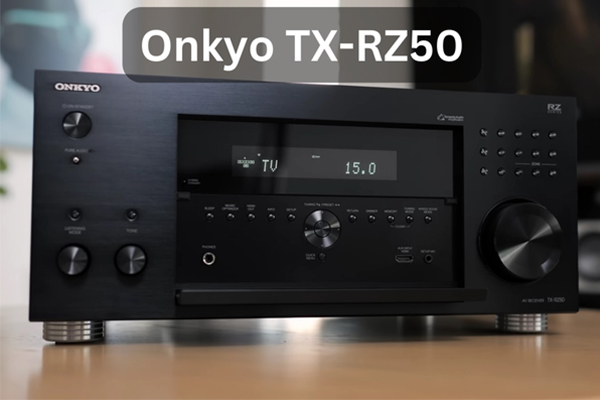
Denon AVR X6700H vs Onkyo TX-RZ50: Build Quality and Design
Alright, let’s break down the build quality and design of our two beasts of an AV receiver.
First up, we have Denon. The overall look is identical to other Denon models, featuring a classic design. It is equipped with a metal chassis that makes it weigh about 21 pounds, ensuring it can withstand anything you throw at it. The front panel is made of aluminum, with a clear and large display and two large signature knobs for volume and source selection. The overall user experience is very good, and it doesn’t take much effort to work with this device.
On the other hand, Onkyo’s receiver is a big giant indeed. This bad boy weighs about 30.9 pounds and is built like a tank. The manufacturer has ensured that no harm awaits this device. The chassis is made of reliable metal. The front panel is minimalistic but very functional, offering many options to control, including volume control, source selection, listening modes, menu navigation, zone control, and more.
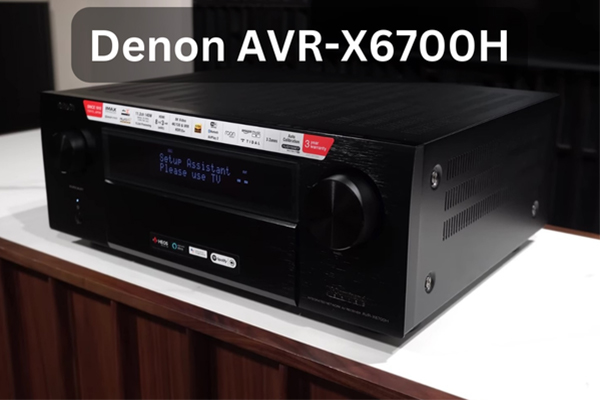
Denon AVR X6700H vs Onkyo TX-RZ50: Ease of Setup and Use
Denon’s receiver, similar to our moderate model, features Audyssey technology for calibration, which is pretty intuitive and easy to use. On the other hand, Onkyo’s receiver utilizes the Dirac Live system, which is significantly advanced and offers sound tweaking features that can cater to every professional’s needs. Denon’s graphical interface and app are very practical and DIY-friendly, while Onkyo’s app isn’t as streamlined but is still pretty practical.
So, Which is better, Denon AVR X6700H or Onkyo TX-RZ50?
Comparing these two premium models, there’s really nothing to declare but a true tie. They both are equipped with excellent video and audio performance features. It all comes down to your own preference. If you seek a user-friendly experience, go with Denon. If you value sophisticated features and functionalities, Onkyo’s the better option for you.
For a seamless, user-friendly experience, choose Denon AVR X6700H. For advanced features and superior functionality, Onkyo TX-RZ50 is the ideal choice
Conclusion
In this article, I tried to compare Denon vs Onkyo by putting them head-to-head in three separate price categories. Considering the fact that Onkyo provided more robust features, especially on its budget and moderately priced models, I tend to think of Onkyo as the better brand here despite mixed reviews on its AV receivers’ longevity.
